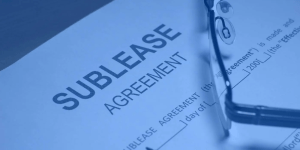In Ontario, a landlord cannot unilaterally decide a fixed amount to charge for damages. Instead, the amount a landlord can charge a tenant for damages to a rental property is determined solely by the Landlord and Tenant Board (LTB). This amount will reflect the actual, documented cost of repairing the specific damage or replacing the damaged item, with a crucial consideration for depreciation. It’s vital for landlords to understand these limitations, as tenants are responsible for damage they cause, but definitively not for normal wear and tear.
Understanding the “Charge” in Ontario
Unlike some jurisdictions, landlords in Ontario are legally prohibited from requiring a separate “damage deposit.” The only permissible deposit is a last month’s rent deposit, intended exclusively for the tenant’s final rental period. This means landlords cannot simply withhold funds from a “damage deposit” to cover repairs.
If a tenant causes damage beyond normal wear and tear, a landlord’s path to charging for it is through a formal application to the Landlord and Tenant Board (LTB). The LTB is the administrative tribunal that governs landlord-tenant relations in Ontario and is the only body that can order a tenant to pay for damages. The “charge” is, therefore, an LTB-ordered reimbursement, not an arbitrary amount set by the landlord.
What Constitutes “Chargeable” Damage?
The LTB will only consider ordering compensation for damage that goes beyond normal wear and tear. This is the natural deterioration of a property from everyday use. Landlords cannot charge for the expected aging of components or minor scuffs that naturally occur over time.
Examples of damage for which a landlord could seek an LTB order for payment include:
- Large holes punched in walls.
- Significantly broken windows or doors from misuse.
- Extensive burns, large tears, or irreversible stains on flooring or carpets.
- Appliances damaged due to clear misuse or neglect.
- Unauthorized alterations to the property that require professional restoration.
- Significant pet damage (e.g., extensive urine stains, deep scratches on doors/flooring).
Conversely, issues typically considered normal wear and tear, and for which a landlord cannot charge, include:
- Minor scuffs on walls or faded paint from light use.
- Carpets showing thinning or wear in high-traffic areas over several years.
- Slightly loose door handles or cabinet hinges.
- Minor discoloration on countertops due to normal aging.
- Small nail holes from hanging pictures.
It’s also important to acknowledge that landlords have an obligation to maintain their properties in good repair. If the damage was exacerbated or caused by the landlord’s failure to perform necessary maintenance, the LTB may reduce or deny the amount the landlord can charge the tenant.
How the LTB Determines the Amount a Landlord Can Charge
When a landlord applies to the LTB for compensation for damages, the adjudicator will determine the specific amount. This determination is based on the following:
- Proof of Damage and Causation: The landlord must provide clear evidence (photos, videos, move-in/move-out reports) that the tenant caused the damage and that it’s beyond normal wear and tear.
- Cost of Repair or Replacement: The landlord must submit at least two detailed quotes or invoices from qualified professionals for the repair or replacement of the damaged item. This documentation is crucial for the LTB to establish a reasonable cost.
- Depreciation: This is a critical factor in how much a landlord can charge. The LTB does not typically award the full replacement cost for an item that was already aged or had a limited remaining lifespan. Instead, they apply a depreciation factor based on the item’s expected useful life.
- For example, if a carpet has an expected lifespan of 10 years and was 7 years old when damaged, the landlord would likely only be awarded a portion of the replacement cost, reflecting the remaining 3 years of its useful life. The same principle applies to appliances, flooring, paint, etc.
- This ensures landlords are compensated for the value lost due to the tenant’s damage, not for a brand-new upgrade.
The LTB adjudicator has the discretion to determine the final amount based on all evidence presented, ensuring it is fair and reasonable.
Tips to Avoid Major Damage from Tenants
While some damage is inevitable, landlords can implement strategies to minimize the risk of significant issues:
- Thorough Tenant Screening: Don’t just check credit and income. Contact previous landlords to inquire about the tenant’s history regarding property care, cleanliness, and any past damage.
- Clear Lease Agreements: Ensure your lease clearly outlines tenant responsibilities for property care, cleanliness, and reporting maintenance issues. Specify what constitutes “damage” versus “wear and tear” to the best of your ability, though the LTB will have the final say.
- Detailed Move-in/Move-out Reports: As mentioned, meticulous documentation with photos and videos is your best defense if a dispute arises. Have the tenant sign off on the move-in condition report.
- Regular, Lawful Inspections: Conduct periodic inspections (with proper written notice to the tenant) to identify potential issues early. This allows for proactive maintenance and can catch minor problems before they escalate.
- Prompt Maintenance Response: Address tenant maintenance requests quickly. Ignoring small leaks or faulty appliances can lead to much larger and more costly damage.
- Foster Good Communication: Maintain a positive and open line of communication with your tenants. Tenants who feel heard and respected are more likely to report issues promptly and take better care of the property.
- Educate Tenants: Provide tenants with clear instructions on appliance use, waste disposal, and general property care.
How Property Management Companies Can Help
For landlords seeking to mitigate damage issues and accurately pursue compensation, a professional property management company can be a significant asset:
- Robust Documentation: Property managers excel at creating detailed move-in/move-out condition reports with comprehensive photo and video evidence, which is indispensable for proving damage to the LTB and supporting the amount claimed.
- Expert Cost Estimation: They have established relationships with contractors and can efficiently obtain multiple, reliable quotes for repairs, which is essential evidence for the LTB’s determination of how much a landlord can charge.
- LTB Navigation: Property managers are familiar with the Landlord and Tenant Board processes, including the proper forms and evidence required for a damage claim. Their expertise can ensure claims are presented effectively to maximize the potential for compensation.
- Proactive Inspections: Regular, lawful property inspections by managers can identify minor issues before they escalate, potentially reducing the scale of future damage claims.
By leveraging a property manager’s expertise, landlords can strengthen their position when seeking compensation for damages and navigate the LTB’s requirements more efficiently.
Conclusion
In Ontario, a landlord’s ability to “charge” for damages is not a simple direct transaction. Instead, it’s a legal process through the LTB, where the amount is determined by the actual, documented cost of repairs or replacement, significantly adjusted for depreciation. Landlords cannot demand damage deposits. By understanding this legal framework, meticulously documenting property conditions, and being prepared to prove costs and tenant responsibility, landlords can effectively pursue the compensation they are legally entitled to for tenant-caused damages.





